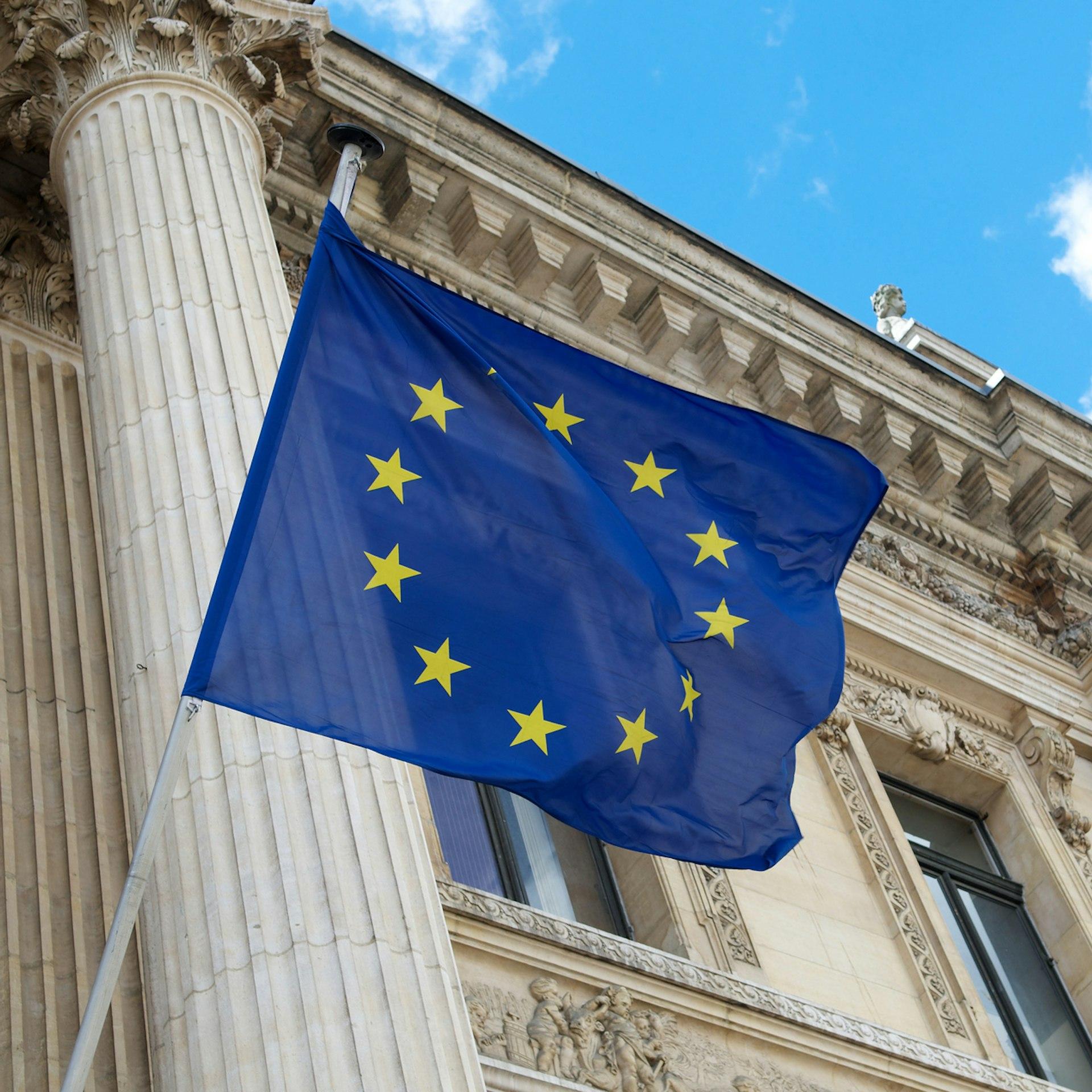As business transactions increasingly move online, tax authorities face new challenges in maintaining effective VAT oversight. To address this, the EU has introduced VAT in the Digital Age (ViDA) — an initiative designed to create a fair and efficient VAT collection framework based on e-invoicing and digital reporting. In this article, we'll answer the most pressing questions about this transformative set of regulations.
Table of contents
Why is the VAT in the Digital Age EU initiative necessary?
What are the focus areas of ViDA?
Who does the ViDA initiative apply to?
What changes will VAT in the Digital Age bring to invoices?
How will ViDA impact Digital Reporting Requirements?
How does ViDA relate e-invoicing and DRRs?
Does ViDA only affect cross-border transactions?
VAT in the Digital Age timeline
What are the key benefits of the ViDA proposals?
Curious about where ViDA is today?
How to select a service provider with ViDA requirements in mind?
What is ViDA?
VAT in the digital age (ViDA) is a set of regulations introduced by the EU Commission to update the current VAT system for the digital era. Officially adopted April 14, 2015, its purpose is to ensure fair and efficient VAT collection for businesses selling goods or services to EU customers, regardless of where those businesses are based or how many borders transactions may cross.

Why is the VAT in the Digital Age EU initiative necessary?
ViDA represents an essential update to Europe's VAT collection system. It’s an effort that simultaneously aims to reduce vulnerabilities and close loopholes while also seizing the advantages of digitalization.
Europe faces a significant VAT gap each year, with about a quarter of this lost revenue stemming from intra-EU transactions. Fraud thrives in the current environment of fragmented periodic reporting, which lacks real-time visibility across Member States.
But the VAT gap isn't just about fraud — it's also about complexity. The current system creates unnecessary friction for legitimate businesses, leading to honest errors and administrative burdens. SMEs feel this impact most acutely, while innovative business models like digital platforms operate in regulatory gray areas, struggling with rules never designed for them.
ViDA proposes a new tax regime that simplifies VAT registration for businesses of all sizes while providing real-time visibility to help Member States combat tax evasion effectively. At a time when Europe needs significant investment to maintain global competitiveness, enhanced digital tax infrastructure and increased revenue are critical priorities — making ViDA a timely and necessary evolution.
What are the focus areas of ViDA?
The ViDA proposal introduces three key pillars that will transform how businesses handle VAT across Europe:
VAT rules for platform businesses — updating how companies operating in the digital marketplace handle their tax obligations
One-stop VAT registration — simplifying how businesses register for VAT across multiple countries
Digital Reporting Requirements (DRR) — modernizing how transaction data gets reported to tax authorities
While all three pillars are equally important, we're going to focus in on the Digital Reporting Requirements.
Who does the ViDA initiative apply to?
ViDA applies to any business selling goods or services to EU customers, whether based inside or outside the EU. Importantly, this includes online marketplaces, platforms and other intermediaries that facilitate transactions between buyers and sellers.
What changes will VAT in the Digital Age bring to invoices?
ViDA redefines electronic invoices across the EU. According to the Public Procurement Directive 2014/55/EU, e-invoices are strictly structured documents that maintain EN-compliant syntaxes — with hybrid invoices also included in this classification.
A notable shift from current continuous transaction control (CTC) practices is the transition of validation rights. Instead of tax authorities having exclusive validation power, ViDA allows taxpayers and authorized third parties to validate invoice content. Member States can still offer optional validation portals for those who prefer using them.
In our whitepaper, we provide practical guidance about these upcoming EU VAT changes for businesses navigating these developments.
Want to learn more about ViDA?
How will ViDA impact Digital Reporting Requirements?
Digital Reporting Requirements (DRRs) stand out as a key focus area within the ViDA proposal. Simply put, DRRs are standardized methods for businesses to report transaction data to tax authorities — traditionally through periodic VAT returns and supplementary reports like EC Sales Lists.
Under ViDA, these requirements are evolving into more sophisticated, real-time digital reporting systems that capture transaction data at or near the time of exchange. These enhanced DRRs will reshape how businesses handle transaction reporting across Europe, affecting both domestic operations and cross-border trade.
For cross-border (intra-community) transactions, DRRs will become mandatory across the entire EU. Every business conducting trade between member states will need to adapt to these new digital reporting standards. When it comes to domestic transactions, member states have flexibility — they can choose whether and how to implement DRRs within their borders. This creates a variable landscape across Europe.
One consistent element across all implementations is the standardization of formats, namely that ViDA preserves and mandates the use of European standard (EN) syntaxes for both e-invoicing and digital reporting. This creates a better connected approach to transaction data across the EU — simplifying compliance for businesses operating across multiple jurisdictions.
How does ViDA relate e-invoicing and DRRs?
E-invoicing and DRRs are closely related but distinct concepts.
E-invoices are structured digital documents exchanged directly between businesses during a transaction. They represent the commercial relationship between trading partners.
DRRs, on the other hand, are monitoring frameworks established by tax authorities to track transactions within their jurisdictions. They represent the compliance relationship between businesses and governments.
While DRRs typically rely on e-invoices as their data source, e-invoicing can exist independently without formal reporting requirements. When e-invoicing and DRRs work in harmony, we see the emergence of continuous transaction controls (CTCs) — systems where transaction data flows seamlessly from business operations to tax authorities, creating transparency while minimizing administrative burden.
Does ViDA only affect cross-border transactions?
No, ViDA covers all sales of goods or services to EU customers, whether cross-border or domestic. Businesses based in the EU selling to customers in their own country will also need to adapt to these new regulations.
Member States can choose to introduce DRR for transactions not covered by intra-Community DRR (like domestic supplies). Features of domestic DRR systems should align with intra-Community requirements. Since each Member State must implement a DRR system for intra-Community transactions, we expect many — if not all — will extend this to domestic transactions as well.
Will the ViDA proposal change current CTC models in the countries that implemented the e-invoicing mandate?
Yes, though the extent depends on each country's current e-invoicing/DRR implementation. Every Member State must ensure their approach aligns with the ViDA proposal.
VAT in the Digital Age webinar
VAT in the Digital Age timeline
Here are some key milestones and important dates related to the ViDA initiative:
December 2022: The European Commission (EC) published the VAT in the Digital Age (ViDA) proposal.
November 2024: The Economic & Financial Affairs Council (ECOFIN) unanimously agreed on the ViDA package.
February 2025 - The European Parliament approved ViDA proposal.
March 2025 - ViDA fully ratified by the European Council.
April 2025 - ViDA enters into force. Mandatory domestic e-invoicing becomes possible without EU approval.
July 2030: Step 2: DRR becomes mandatory for intra-EU transactions and optional for domestic transactions.
What are the key benefits of the ViDA proposals?
ViDA intends to create a more connected, streamlined approach to tax compliance that deliver several compounding benefits to businesses:
Reduced compliance complexity: The introduction of simplified VAT registration and standardized e-invoicing helps eliminate redundant processes and reduces the resources needed to manage multi-country VAT obligations. For businesses operating across borders, this means less time navigating different systems and more time focused on expansion.
Increased efficiency: Automation reduces the need for manual invoicing and reporting, streamlining operations. Finance teams can redirect their expertise from data entry and document handling to more strategic activities that add value.
Better cash flow: Faster processing of invoices, returns and refunds improves cash flow management — a critical advantage in an economic climate where working capital efficiency directly impacts competitiveness.
What is the status of ViDA today?
On March 25, 2025, the ViDA package was published in the official journal of the European Union. The legislation within the package entered into force 20 days after publication, on April 14, 2025.
This means that, as of April 14, 2025, Member States are free to begin introducing domestic e-invoicing obligations without requiring approval from the European Commission.
In summary: the first stage of ViDA has begun.
How to select a service provider with ViDA requirements in mind?
As ViDA-driven changes gear up, partnering with a compliant e-invoicing solution provider is key. This provider should ideally handle both aspects of ViDA requirements: e-invoicing between trading partners and reporting of invoice data to authorities.
However, given the borderless nature of modern commerce, businesses need compliance capabilities that extend beyond Europe — finding a provider offering both ViDA compliance and global compliance is crucial. This strategic choice ensures operational consistency across regions, eliminating the need for redundant systems or complex, costly arrangements when expanding into new markets.
How can Pagero help?
Pagero is the first ViDA-ready global provider, offering industry-leading technology and expertise to help you become and remain compliant in Europe and well beyond.
Our solutions automatically adapt to the specific e-invoicing CTC and reporting requirements in over 80 countries, handling all national e-invoicing and e-reporting formats and requirements. Furthermore, our solutions are continuously updated with changing regulations, so you don't have to monitor every regulatory shift across your markets.
Should you want to stay on top of those shifts, we’re also here to help. The 2024 IDC MarketScape report recognized this commitment in its assessment of Pagero as a Leader in European Compliant e-Invoicing, specifically highlighting our distinguished Regulatory Affairs team:
“By harnessing its connections and distill very complex e-invoicing and CTC mandates, (Pagero) can play a key role as a trusted advisor for customers and partners.”
Our open network approach means you connect once to reach all your trading partners — regardless of the systems they use. This single connection handles both compliance requirements and business process improvements simultaneously.
ViDA - Leveling the playing field for businesses
The ViDA initiative represents a crucial step in adapting the VAT system for today's digital landscape. By ensuring fair and efficient VAT collection, it creates a level playing field for businesses while preventing government revenue loss. Businesses selling goods or services online to EU customers must understand ViDA's implications and ensure compliance to avoid potential penalties.
This text was originally published 11 April 2023 and last updated 07 May 2025.
Prepare for ViDA with Pagero
Topics:
Related Articles
Have questions?

Get in touch
Interested in getting started or learning more? Leave your contact details here and we will reach out to you!
